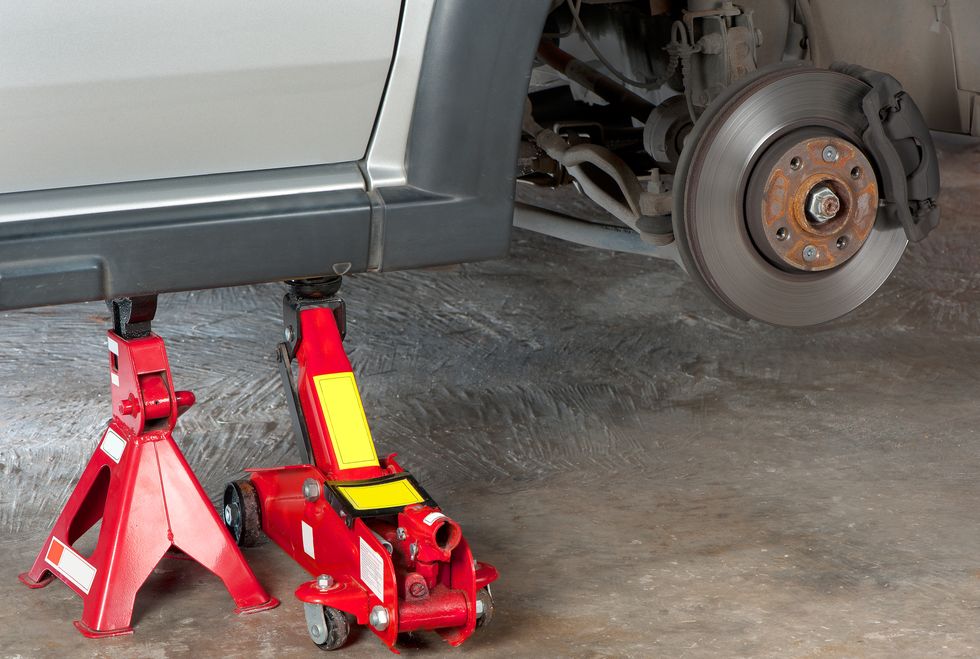
Everyone knows that taking care of your vehicles is crucial, but it’s equally important to prioritise safety while doing so. You might always be wondering, “Why do I need jack stands? Can’t I just rely on my trusty hydraulic jack?” Well, using jack stands is like adding an extra layer of security during maintenance tasks. It’s the difference between peace of mind and potential disaster. This great blog post will shed light on the jack stand usage and share some essential tips and tricks to really help keep you safe and your vehicle in tip-top shape.
1. Choose the Right Jack Stands
Selecting the right jack stands for your car is crucial. Not all jack stands are created equal, and matching their weight capacity to your vehicle’s specifications is essential. Consult your vehicle’s manual or even contact the manufacturer to determine your model’s appropriate weight capacity. Additionally, opt for jack stands with sturdy construction and reliable locking mechanisms. Quality matters regarding jack stand, as they are your lifeline when working beneath the vehicle. Look for well reputable brands and read customer reviews to ensure you invest in a reliable and safe set of jack stands.
2. Inspect Jack Stands Before Use
Before you even think about placing your vehicle on jack stands, take a moment to inspect them thoroughly. Look for any bad signs of damage, such as cracks, rust, or bent parts. It’s crucial to ensure the jack stands are in good condition before putting your vehicle’s weight on them. Additionally, test the stability and functionality of the locking mechanisms. Give them a gentle wiggle to see if they remain sturdy or if there is any play in the structure. If you notice any issues or concerns during the inspection, it’s time to retire that jack stands and invest in a new set. Your safety is non-negotiable.
3. Find a Level and Stable Surface
The foundation for safe jack stand usage starts with finding a level and stable surface to work on. Avoid uneven or sloped surfaces, as they can compromise the stability of the jack stands and pose a safety risk. Look for a flat, solid area, such as a concrete floor or stable driveway. Use shims or other levelling tools to create a stable surface if needed. Always remember that the very last thing you want is for your vehicle to shift or topple off the jack stands due to an unstable foundation.
4. Properly Position the Jack Stands
Now that you have a level and stable surface, it’s time to position the jack stands correctly. It’s crucial to place them at the designated lift points or specific points recommended by your vehicle’s manufacturer. These lift points are designed to handle the car’s weight and provide optimal support. Consulting your car’s manual will give you the exact locations for the jack stands. Once you’ve identified the lift points, position the jack stands securely under them. Ensure that they are evenly spaced and adjusted to the appropriate height. Take time during this step, as correctly placing the jack stands is crucial for your safety.
5. Lift the Vehicle Carefully
When lifting your vehicle onto the jack stands, it’s important to exercise caution and follow a step-by-step process. Start raising the vehicle using a hydraulic jack or a similar lifting device. Position the jack under the recommended lifting points, usually near the wheels. Carefully pump the jack to lift the vehicle, taking your time to ensure a gradual and controlled ascent. As you lift, keep a close eye on the vehicle’s stability. If you get to notice any signs of instability or wobbling, immediately lower the vehicle and reassess the situation. Safety should always take precedence over convenience.
6. Double-Check Stability
Once the vehicle is lifted and resting on the jack stands, it’s crucial to double-check its stability. Give the vehicle a gentle rock from side to side to verify that it is securely supported by the jack stands. Any signs of movement or instability should be addressed immediately. Additionally, consider using wheel chocks as an extra safety measure. Wheel chocks are wedges placed against the tires to prevent any potential rolling or movement of the vehicle. Remember, your safety depends on the stability and security of the vehicle on the jack stands, so always take the time to ensure everything is in good condition and in order.
7. Use Jack Stands in Pairs
To ensure maximum stability and support, always use jack stands in pairs. A single jack stand is insufficient to secure the entire vehicle’s weight. By placing a pair of jack stands on either side of the vehicle, you distribute the weight and minimise the risk of instability. For example, if you must work on the vehicle’s front end, position a pair of jack stands near the front wheels. Similarly, if you’re working on the rear, use a pair of jack stands near the back wheels.
Conclusion
By following these essential tips for using jack stands safely, you prioritise your well-being and ensure a secure working environment. Remember, taking shortcuts or neglecting safety measures can have severe consequences. So, the next time you find yourself beneath your car, always reach for those trusty jack stands and work confidently, knowing that you’ve taken the required safety precautions to protect yourself and your vehicle.



